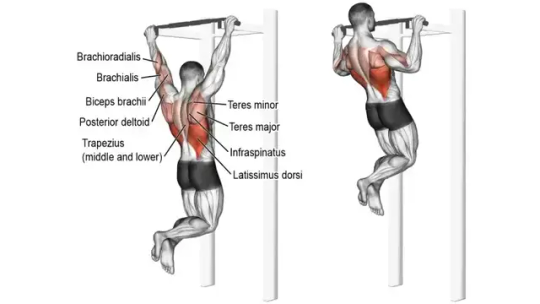#WingsExercises
Text
Best Wings Exercises That You Can Do At Home and Gym

Do you want stronger, toned back and shoulder muscles? It's time to add wings exercises to your back workout routine.
Many fitness enthusiasts focus on building their arms, abs, and chest, but they often forget about the wings (aka the latissimus dorsi muscles).
Having strong wings or an upper back can help improve your posture and prevent back pain.
It's time to show your wings some love to get a V-shaped body.
In this blog post, we'll discuss the benefits of wings exercises, different types of wings exercises, and how to use them in your workout routine.
Let's get started!
What Are Wings Workout?
Wings workouts refer to training that specifically targets the muscles of the upper back - the lats, rhomboids, and surrounding areas.
These workouts can be done at home or in the gym and can include bodyweight exercises, resistance band exercises, and weightlifting exercises.
Wing workouts have several benefits, including improved posture, increased upper body strength, and a reduced risk of injuries.
Some of the best exercises for the wings are pull-ups, chin-ups, bent rows, dumbbell rows, and deadlifts.
At Home Bodyweight Wings Exercises
You don't need expensive gym equipment to start making your wings stronger and more defined. There are plenty of bodyweight back exercises you can do at home.
Bodyweight is used as resistance to hit the upper back muscles from all angles.
1. Pull Up
Pull-ups are a compound bodyweight exercise that targets the muscles in the upper body, primarily the latissimus dorsi (lats) of the back, but also the biceps, rhomboids, and deltoids.
The pull-up increases the strength, thickness, and width of your back, specifically your lats. The lats are what influences back width and form the “V” in the upper back.

How To Do
- Grab the pull-up bar with your hands shoulder-width apart.
- Palms can face away from you (traditional pull-up) or towards you (chin-up).
- Before you start pulling yourself up, make sure you engage your core and keep your body tightly.
- Use your upper body strength to pull yourself up until your chin is above the bar.
- Slowly lower yourself back to the starting position.
Tips
- Ensure that you're not using momentum or swinging during the movement.
- Start with assisted pull-ups if you can't do the full pull-up.
- Exhale as you pull yourself up and inhale as you lower yourself down.
- Go full range of motion and keep form correct.
Read the full article
0 notes